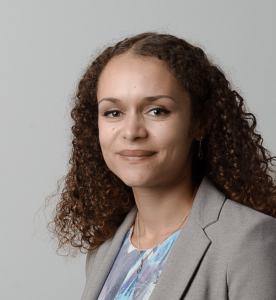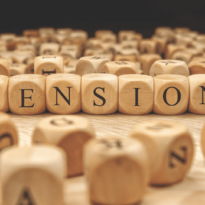Your client has inherited a pension – so what happens next? Jessica List, pension technical manager, Curtis Banks, considers the options available and the factors to consider.
Since the pension freedoms, we often talk about the planning opportunities relating to death benefits from defined contribution (DC) pensions. This is particularly true where clients have SIPPs, which tend to offer more of the flexibility afforded by the rules.
Less often, perhaps, do we discuss the planning opportunities from the perspective of the beneficiaries: what they might need or want to consider when they receive their inherited funds. This is especially important where a beneficiary’s options are limited; perhaps as a result of the deceased client’s plans not quite working out as expected.
Pitfalls
The death benefits rules are flexible, but also complex with lots of ways to get caught out. If clients don’t plan carefully, it can make things harder for their beneficiaries.
The main potential pitfall is the notoriously tricky set of rules that determine when beneficiaries’ drawdown is permitted within the legislation. Beneficiaries who were either nominated on the deceased’s expression of wishes, or who meet HMRC’s definition of a dependant, should be eligible for beneficiaries’ drawdown. Beneficiaries who did not meet either of those conditions would only be eligible for drawdown if the deceased did not have any dependants and had not nominated any people or charities on an expression of wishes.
Providers will also have their own rules and conditions which may hinder a person’s plans for their beneficiaries if not carefully considered. This could be something quite general, such as a provider simply not offering beneficiaries’ drawdown. However, there could also be more obscure potential issues, such as a provider not opening plans for overseas residents and applying this condition to beneficiaries’ drawdown cases as well. These aren’t necessarily the first things people think to consider when making plans to pass on their residual DC wealth; they can easily only come to light when the death benefits are being paid.
Considerations for beneficiaries
Ideally clients and their beneficiaries will all be working with an adviser to avoid the above-mentioned issues. However, it’s also possible that beneficiaries will seek advice for the first time only after inheriting their funds and may be looking for help regarding the options available and the factors to consider.
The flexibility and tax efficiency possible within the current rules mean more people now plan to leave money to children and grandchildren rather than (or as well as) their spouses and partners. This means more working age people inherit funds they might not immediately need, which introduces new planning options and considerations.
For example, if a working beneficiary inherits funds in beneficiaries’ drawdown, they might assume the best course of action is leaving the money untouched, using it to boost or jump-start their own retirement savings. However, leaving inherited funds untouched might not be the optimal way to achieve this goal. For some, it may be more tax efficient to use withdrawals from the inherited funds as income, while increasing their own pension contributions from their earnings. This could allow the beneficiary to make greater use of any matched contribution offer from their employer, as well as potentially save on income tax and National Insurance contributions on balance.
There are potential drawbacks to consider too. Beneficiaries in this position would, over time, be reducing a pool of money that would be readily available when needed, in exchange for increasing savings that would be tied up until they reached pension age. Some beneficiaries may want to keep at least some of the inherited funds in beneficiaries’ drawdown to be available for large future costs, such as a house deposit, or to provide an emergency fund. This may be particularly true of younger beneficiaries who are further from retirement and more likely to want to plan for future costs.
Another possibility is that a working age beneficiary has no option but to receive a sizeable lump sum, potentially after being caught out by one of the abovementioned issues. Many beneficiaries will consider paying some or all of the lump sum back into a pension, even though this won’t give quite the same flexibility that beneficiaries’ drawdown would have done. For many beneficiaries in this position, it will be the first time they’ve had to consider the limitation on how much tax relief is available or needed to think about the annual allowance (and potentially carry forward). Beneficiaries may seek help determining how much to contribute each tax year, and what to do with any remaining funds in the meantime to make the best use of them.
It is still the case that many beneficiaries will already be retired and accessing their own pensions. Such beneficiaries receiving a lump sum may opt to cease taking money from their own DC pensions and use the lump sum for their income first, in order to preserve the funds still benefiting from the pension wrapper’s tax advantages. However, such beneficiaries inheriting funds in beneficiaries’ drawdown may have a harder time determining the best course of action for their circumstances. Beneficiaries would need to consider many factors, such as:
Tax: are the inherited funds taxable or tax free, and how can the beneficiary make the best use of their allowance and tax bands?
PCLS: does the beneficiary have any remaining PCLS from their own funds, and when would it be most beneficial to use it?
The lifetime allowance: might the beneficiary face an LTA issue on their own pension funds, and would this be helped or exacerbated by taking income elsewhere?
Death benefits: when the beneficiary passes away, are there different options available for passing on their own, and the inherited, pension funds?
Greater area of focus
Death benefits planning can be as complex an area for the beneficiary as it is for the client; here we’ve touched on just some of the possible scenarios and considerations. As more pensions are passed on and DC pensions become a bigger part of more people’s total retirement savings, we expect this to continue to grow as an area of interest.
This article was first published in the March 2022 issue of Professional Paraplanner.






























